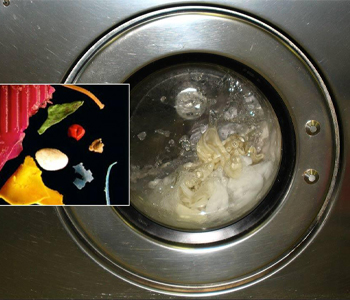ff the coast of Cullercoats, in northeast England, researchers Max Kelly and Priscilla Carrillo-Barragan send a long tubular net into the depths of the North Sea.
Known as a vertical tow, the net is used to collect samples of microscopic zooplankton, whose health can serve as a bellwether for an ocean’s overall wellbeing.
Newcastle University’s Dove Marine Laboratory has been collecting microorganisms from these waters for the last 50 years, shedding light on the impact of changing nutrient levels and global warming. But now experts are studying the samples to examine a growing but almost invisible threat to our seas: plastic microfibers.
Microplastics (those measuring up to 5 millimeters in diameter) make up almost a fifth of the 8 million tons of plastic that ends up in the oceans each year. Of these, miniscule strands known as microfibers — which largely come from synthetic clothing — are the most common, according to Kelly, who researches marine biotechnology at the university.


